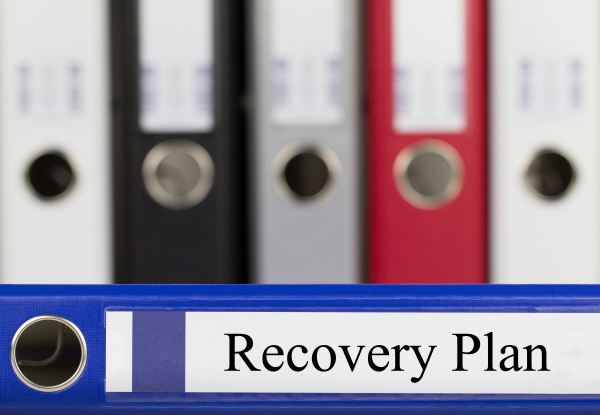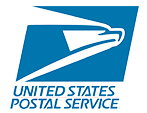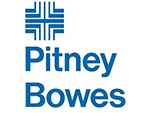Successful businesses are usually recognized for their high profits and growth. But another characteristic often overlooked in a successful company is its ongoing preparation for a disaster.
A business continuity disaster recovery plan can be what makes the difference for a business’s livelihood in the case of a natural disaster or emergency. An effective strategy can keep businesses afloat during unprecedented times.
Before the coronavirus pandemic began, pandemic disaster recovery plans were few and far between. Most recovery plans focused on saving digital data in the case of weather events or natural disasters.
Now, businesses are expanding to transactional mail disaster recovery plans to include print and mail functions. This way, the plan ensures that invoices, notices, statements, checks, and other essential documents are kept safe.
Print-to-mail operations often get ignored in business disaster plans, making it even harder for those operations to recover. If there is an interruption in business, digital data can usually recover quickly, but printing and mailing operations could take weeks to replace and while down, receivables can suffer.
The COVID-19 pandemic has forced businesses from all sectors to reconsider their plans for survival in the face of a disaster. Continuing business throughout a pandemic or other emergency requires an understanding of how to maintain or move print and mail operations if necessary.
Since the pandemic began, transactional communication through secure, mailed documents has become an increasingly important operation of big businesses like credit unions, insurance firms and healthcare organizations. Disaster plans that consider all areas of business will keep your business afloat during unexpected times. Compliance communications and the need for cash flow do not take a break during a disaster.
Customizable Transactional Mail Recovery Services
Most large businesses’ disaster plans are focused just on survival. These plans prioritize information technologies and digital data systems, but they often leave out secure printed document and mailing processes.

Business continuity disaster recovery is an advanced disaster response that protects both digital and print operations. A practical plan to transition print and mail operations during a disaster can make the difference between a business’ survival or recovery.
Print and mail operations include more than critical communications between businesses and clients. Checks, bills, banking statements, HealthCare letters, regulated correspondence, and other important documents must go through the print and mail department of a business.
No two businesses will be the same in how they handle disasters. But no matter what the industry is, print and mail operations must continue, and digital data must remain accessible.
Municipalities and large businesses like manufacturers, insurance, health care companies, and collection agencies rely on prepared, experienced DR services, like those provided by Electronic Output Solutions (EOS) to keep their business running. EOS offers transactional mail recovery and resources for companies that can’t afford to lose contact with their clients.
EOS team members assist with bill payments, MICR check printing, certified and compliance mailings, and data processing. Partnering with EOS before a disaster ensures continuity and strengthens your operations so service will not stop unexpectedly.
It is vital to maintain close contact with your disaster service provider. If your business environment changes or the disaster plan needs to change, the service provider should be informed so they can update their practices accordingly. Sadly, most approaches to DR fail at this because they have no built-in mechanism to mirror all of the changes that happen over time. Just like applying updates to your computer operating system, it will go smoother if you implement updates regularly vs applying a years’ worth of updates the morning of the big web presentation.
How Do I Know My Business Disaster Plan Will Work?
Could your business survive if all print and mail operations stopped for a day? What about for a week?
How would you communicate with your clients if your email system got hacked or went down for an extended period of time?
These questions are all examples of what business owners should prepare for when outlining their operations. When planning for the unexpected, you should have clear alternate routes and processes in mind that do not rely on the current state of the business.
Test Your DR Plan
The best way to know if your business continuity disaster recovery plan will work is by testing it. Running a test of your business’ continuity plan is the only way to have confidence that it will work in practice if disaster strikes.
Theories about contingency plans are often too vague or do not encompass all aspects of a business, so putting the plan to work will help find holes in the system. Business continuity DR plans should continuously evolve to efficiently take care of the company if everything starts to fall apart.
Our Electronic Output Solutions Disaster Recovery Service
Partnering with EOS for print and mail disaster recovery means you will exercise the DR plan every day. EOS processes a small amount of all critical communications as part of their service to ensure print and mail communications will continue if there were a disaster.
Daily DR
Referred to as Daily Disaster Recovery, or Daily DR, EOS staffers consistently work with the businesses they serve to ensure data and reporting functions are working as expected. Being involved in the business’s day-to-day operations guarantees that EOS will be able to handle the full range of communications if the disaster plan went into effect.
Typically, experts recommend completing an annual test of all disaster recovery plans. But print and mail recovery plans through providers like EOS remove the stress of a yearly test by processing a small volume of all critical applications every day, week, or month.
Daily DR addresses two problems;
- The first is ensuring your documents are produced and mailed exactly as they are being done in house or with another vendor.
- The second is to contain costs related to annual DR testing. Rather than producing documents with the intent to simply review for accuracy, EOS Daily DR is actual production output so your overall costs remain about the same with the benefit of having a proven DR solution.
Business Continuity Disaster Recovery
Disaster recovery plans were barely a topic of conversation for most businesses before the coronavirus pandemic began. Today, businesses of all sizes from all industries are thinking twice about their worst-case-scenario preparation.
Recovery plans that focus on business continuity must involve both digital and print operations. Surviving a disaster is not enough, and transactional mail disaster recovery is an aspect of business continuity that can no longer be ignored.
Print and mail operations are crucial to any business’s success. Contact a disaster plan service provider today to ensure your business is taken care of in the case of an emergency. Pandemic disaster recovery may not have existed before, but it will now that we see the effects that a lack of preparation can have on businesses.
Contact EOS to discuss daily DR business continuity plans today.







